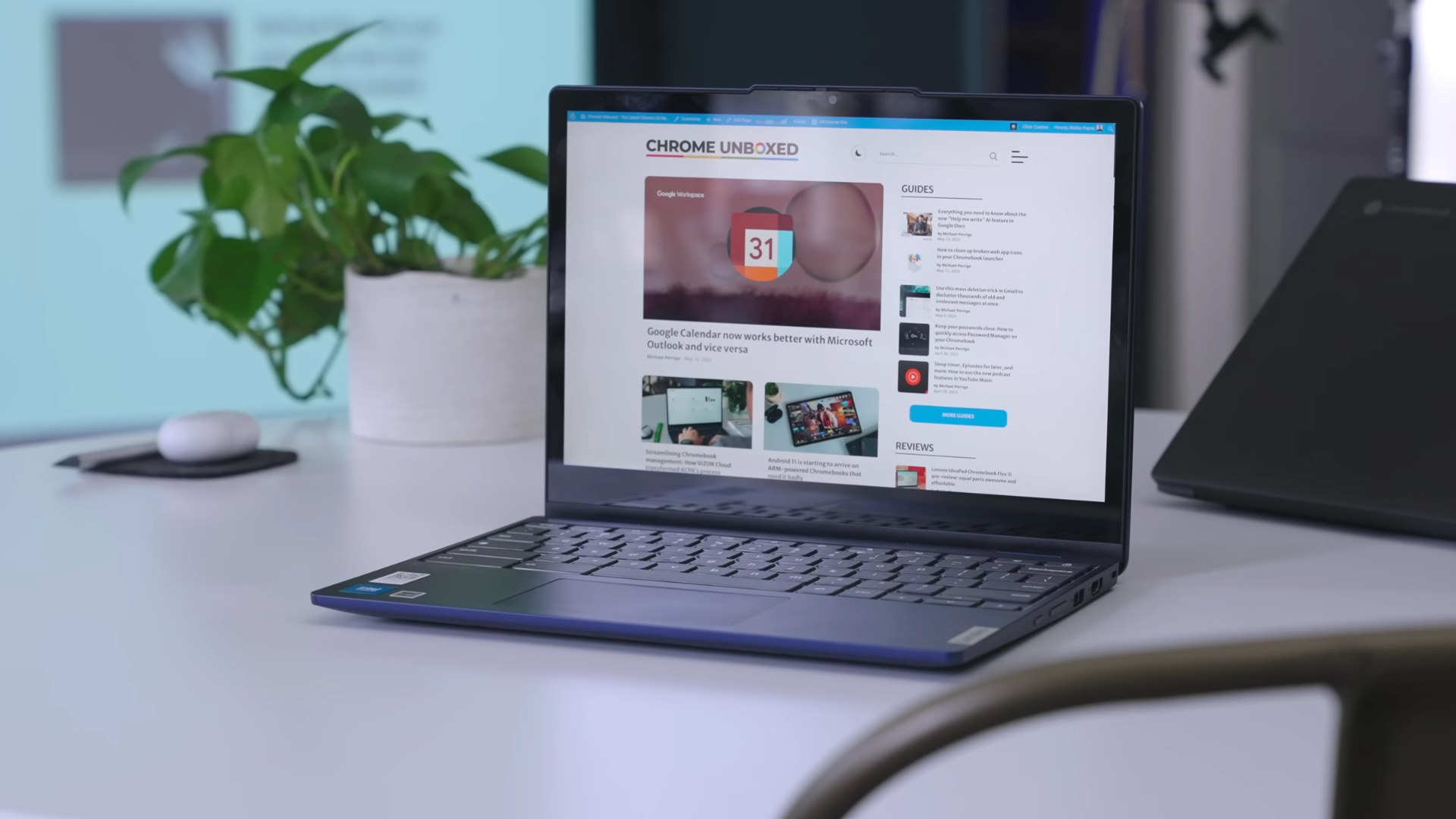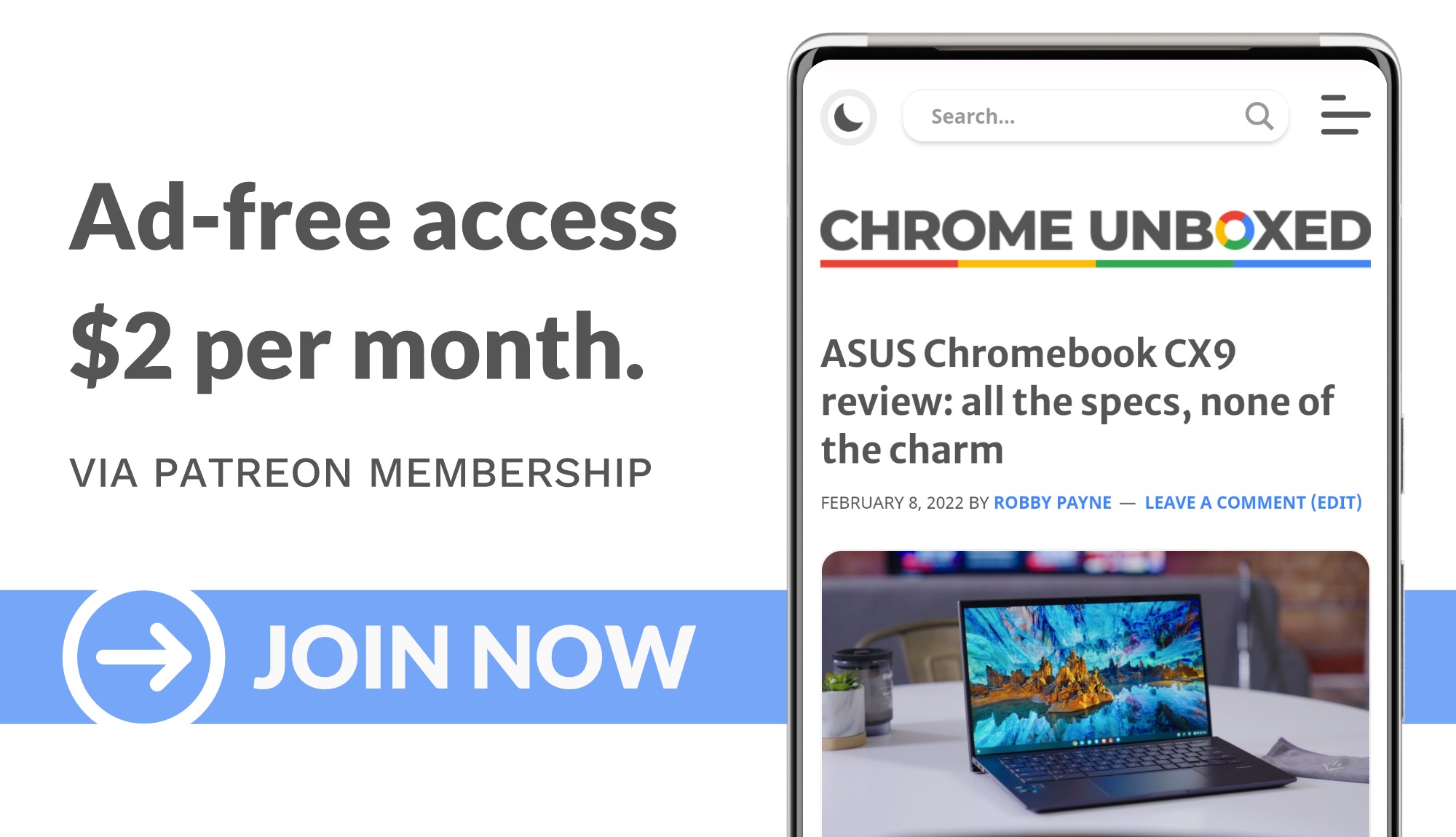I thought by now things might be different. I really thought there was going to be a wider appeal for general consumers in the higher end of the Chromebook market. But the more I step back and look at where things are, the more confident I become that Chromebooks won’t truly break through in the consumer portion of the market until Google gets manufacturers on board the higher-quality, lower-price Chromebook train.
Where we are with consumer Chromebooks
Consumer Chromebooks – like the ones you see in your local Best Buy – are pretty fantastic these days. There are low-cost options, mid-range options, and devices like the Framework Chromebook or the Dragonfly Pro that give you all you could ask for in a laptop for a bit of a higher price. And while I’d still argue that those prices are pretty good for what you get, there’s a growing problem coming from manufacturers like Apple that make this less and less clear cut. We’ll get into that shortly.
With the other market segments, this is less of a conversation. For the EDU sector, price drives sales and making sure those Chromebooks are durable, long-lasting, and affordable are the deciding factors when it comes to build quality and materials. On the other end of the spectrum, the enterprise audience looks for high security, quality materials, and fast processors. Those Chromebooks get expensive and are sold as fleets many times, so the 1:1 comparison with what can be bought at a local Best Buy store isn’t always fair.
In the consumer space, things are just a bit more nuanced. There are those who need a laptop to use around the house, those that need one for work, those who want something affordable and those who want the best overall build quality. Some consumers want speed over all other things and there are those who pay far more attention to things like speakers, portability or the screen. It’s just not clear-cut what makes the best Chromebook when you are talking to general consumers.
And that’s why this space is such a tough one for Chromebook makers to crack. While there’s an argument for nicer materials in more-expensive Chromebooks, that argument only goes so far. And with the race to the bottom, there’s a line that can’t be crossed in this space if you want to appeal to a wide audience: namely, your Chromebook can’t feel like an absolute piece of flimsy junk.
The problem that is quickly arising
Here’s the problem I referenced above: companies like Apple are seeing the need for more-affordable options, and are now delivering staggering hardware for far less money than they used to. Right now, the Apple Macbook Air with the M1 processor is $800 at Best Buy. $800. Let that sink in a second and then consider the mid-high-end Chromebook market.
When creators like MKBHD still rock the M1 Macbooks and recommend the M1 Macbook Air to those looking for a great laptop, you know it’s still a great device. With Apple’s attention to detail in hardware and the proficiency of their own internal silicon, these newer Macbooks are fast, light, well-made, and have absolutely ridiculous battery life. And if you choose to, you can do tasks like video creation with ease and run apps that simply aren’t available on Chromebooks.
And this is the crux of the issue. When approaching a general consumer looking for a laptop, an $800 Macbook Air is going to run circles around Chromebooks and Windows laptops at that price, and that means more and more people ready to shell out that sort of cash on a laptop are simply going to choose the device that limits them less.
While people like me who prefer ChromeOS are definitely out there, we’re few and far between. For most people with $800 in their hand looking for a laptop, it’s going to be a tough sell to explain to them why they should buy a similarly-priced Chromebook over the Macbook. Convertible form factors and touchscreens only go so far, and for many consumers, the ability to get into video/photo editing down the road if they choose is enough to push them over to something like the Macbook Air.
So, what’s the solution?
The solution, then, comes down to price. A device as crafted and beautiful as the HP Dragonfly Pro Chromebook simply cannot cost what it does in this space. Again, I think the price is in line with the quality of the hardware, but that argument is tough to make when sat next to the M1 Macbook Air at $800. It just is. The only real advantage the Dragonfly has from a hardware perspective is the screen that comes both with touch input and gets wildly bright. But with a $200 upcharge, is that worth it for the general laptop shopper? Especially when you consider the wider net you cast with MacOS from an app perspective?
To be fair, the M1 Macbook Air is actually $999 on a normal day, so it’s the same price as the Dragonfly Pro, but even at the same price, the argument for a general consumer is tough. All things being equal, if that person enjoys the simplicity and speed of ChromeOS, they may choose the Dragonfly. But most people are still unfamiliar with ChromeOS, so it becomes far more likely that they lean towards the Macbook in this scenario.
But if the Dragonfly was $800 on a regular basis and the Macbook wasn’t on sale, perhaps the conversation shifts a bit and the premium quality of the Dragonfly looks pretty compelling in light of a $200 discount when you consider the 16GB of RAM and 256GB of storage you get. And with that example you begin to see where I’m going with all this: price matters so much in the consumer market and it changes the perspective of everything for a shopper.
Consumer Chromebooks need aggressive pricing
So, with all that said, where I think the consumer portion of the Chromebook market will thrive is in the $300-$600 range. Apple will never build a device with that sort of price tag, and we all know the quality of Windows laptops in this price bracket. Chromebooks tend to thrive in this area, and if manufacturers see this, understand it, and get on board with it, I think we could see a sales boom for these devices.
Think about Chromebooks like the Acer Chromebook 516 GE or Spin 714 that drop into the $499 range when on sale. When they do, there’s no doubt potential buyers get excited and we do as well. Getting devices this good for that sort of money feels like an absolute win and even though there are things that those Chromebooks can’t do that an M1 Macbook Air can, you don’t worry about it nearly as much when the price is 50% less.
And with the coming rise of great, affordable Chromebooks with the Intel Alder Lake-N chips inside (see our review of the Lenovo Flex 3i for reference), I think there’s a chance we see some very nice hardware with sub-$400 pricing in the near future. Between discounts on the $700 devices and new entries that start in that perfect $300-$600 range, I think the shift with Chromebooks in the consumer space is going to rest heavily on the shoulders of these sorts of devices.
Does that mean there’s no market whatsoever for $999 Chromebooks? No, but I think their reach will remain limited until all the computing angles are addressed. Content creation solutions, gaming, and app selection all need to continue being focused on by Google. In time, ChromeOS could end up being an OS that has everything you need across the board.
For now, however, limitations still exist; and those limits are things that push people to other systems when all things are equal. If price can truly be mobilized as a selling factor in well-made Chromebooks, however, I think Google has a window to finally break through in the consumer market and get Chromebooks to a point where they see broad mass appeal. We need more great devices in this price range to keep coming, though, and luckily, I feel confident we’re headed in that direction.
And if that is the case and the $300-$600 Chromebook segment lights up with all sorts of compelling options, I think we’ll finally start seeing larger numbers of Chromebooks flying off shelves. The high-price end of the market isn’t where Google will win this. The lower-mid-range is where it’s at, and I’m very hopeful that we will see far more devices like the Lenovo Chromebook Flex 3i soon.



